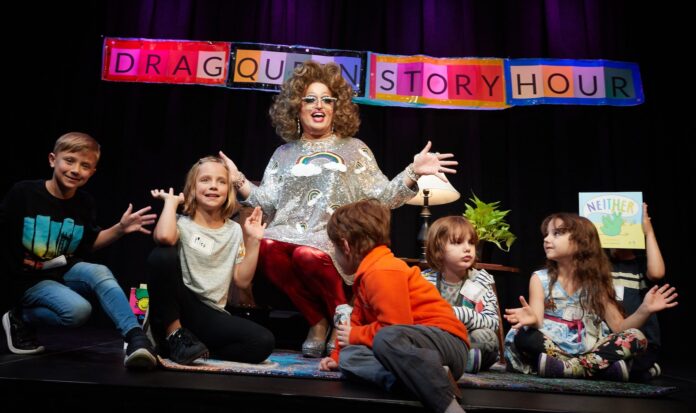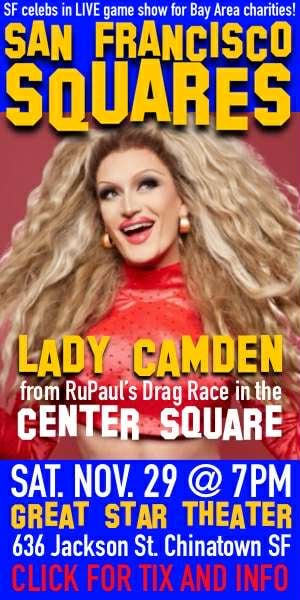Imagine what the United States would be like if there were more literate drag queens were in roles of leadership. The thought might surface upon witnessing the evolution of Lil Miss Hot Mess, who has risen from her baby drag days in San Francisco, where she regularly graced the stage of Heklina’s Mother shows, won the inaugural edition of Club Some Thing’s Tiara Sensation pageant, and helped drive the #MyNameIs campaign that called into question Facebook’s “real name” policy. Today, Miss Mess serves on the board of Drag Story Hour, having furthermore come to embody an archetype that strikes fear into the heart of MAGA: a drag queen who writes children’s books about drag performers.
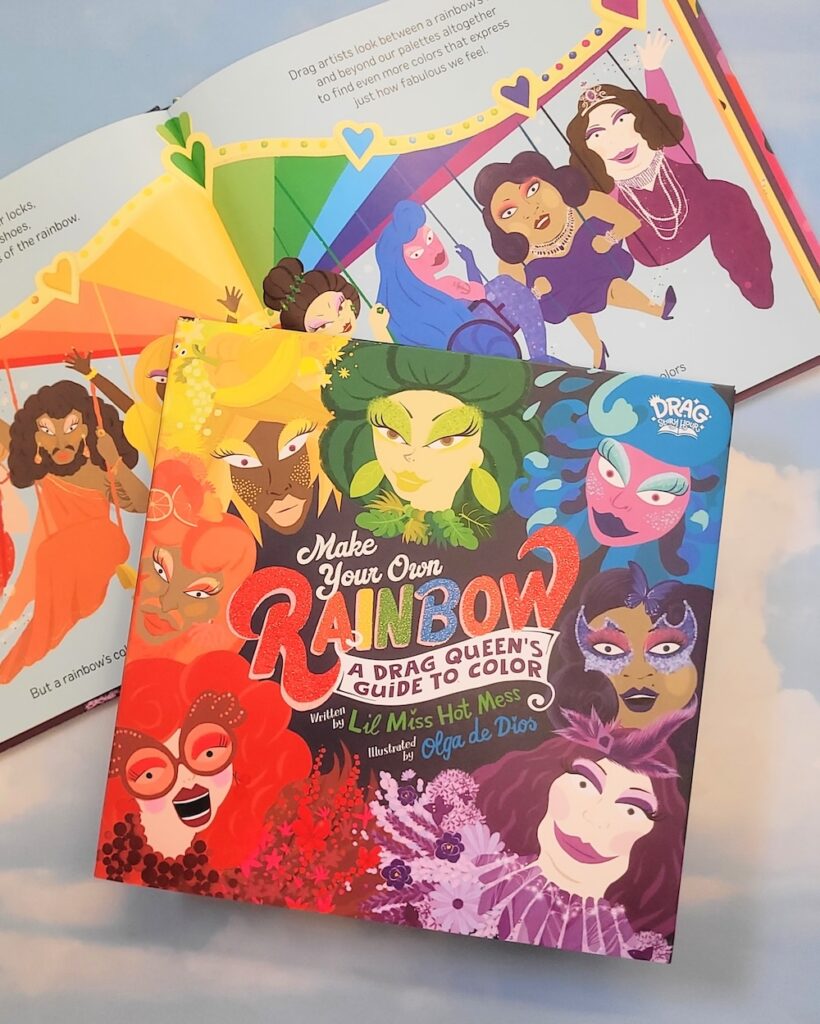
You must read the three-book series she has produced in collaboration with fabulous illustrator Olga de Dios, whose latest edition, Make Your Own Rainbow: A Drag Queen’s Guide to Color (Running Kids Press, $18.99) dropped last week. Its pages are riotous explosions of hues meant to guide kids into an understanding of the rainbow as a continuum, whose shades galore are perfect for cloaking oneself in feathers, fruit slices, tiger stripes, and glittering mermaid tails.
Like the rest of the slim little Mess-Dios picture books (The Hips on the Drag Queen Go Swish, Swish, Swish and If You’re a Drag Queen and You Know It), Make Your Own Rainbow is participatory, with queens of all shapes and sizes, in wheelchairs and a variety of gender presentations.
Of course, the fascists are big mad about all of this. In late March, none other than Marjorie Taylor Greene herself used words like “monster” and “repulsive” to (falsely) assert that PBS had featured Lil Mess Hot Mess on their children’s programming—yes, during the same anti-public-media U.S. Congress hearing where we were treated to musings of whether Elmo was a Communist. Greene delivered the words in front of a massive print-out of a fetching Lil Miss Hot Mess headshot, in which the performer sported an exuberant mass of red curls and a sequined Fourth of July tunic that you’d think a rabid Trumper would actually be into.
Drag Story Hour has also come under fire, it’s presenters and kiddos having to weather serious safety threats—and none of it has stopped its bedazzled readers. (Indeed, in November in an event unrelated to the non-profit, Lil Miss Hot Mess showed her absolute mettle by hosting a Queer Storytime for Palestine in Northampton, Massachusetts.)
LMHM for Congress? You’d be excused for dreaming of such a campaign during our Zoom interview with the glamorous fan of “disrupting everyday business.”
48 HILLS It made me so happy to spend some time with your children’s book series, including of course, the newly released Make Your Own Rainbow. It had me wondering, what were your reading habits like as a kid?
LIL MISS HOT MESS I was a reader! I mean, not surprisingly. I was a nerd. When I was older, I really loved fantasy, but I think in general, I did appreciate—maybe not the escape, but the ability to active my imagination and go to different places in children’s literature. I don’t know that I went to so many public story times, but I loved, even in elementary school, going to the library and being read to. In many ways now, I feel like I kind of model my story hours after that, or it’s embedded in me in some way. I loved BOOK IT!, I loved the summer library reading challenge. I loved the Madeleine L’Engle series, I read a lot of this series called Great Illustrated Classics and it was a lot of like, hair-down versions of like, Dickens and Jules Verne.
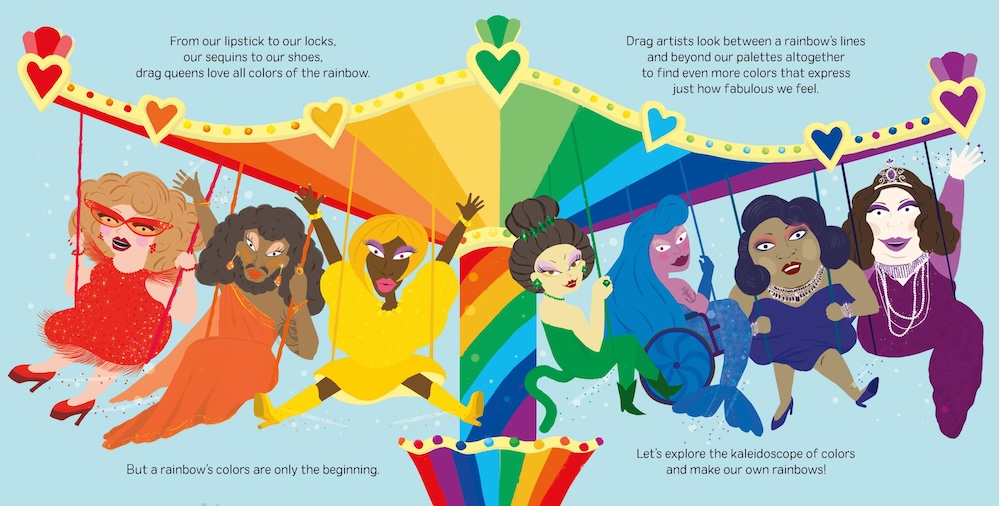
48 HILLS Do you remember the first time you read about a drag queen?
LIL MISS HOT MESS I mean, I don’t think I ever read about a drag queen. I think I was introduced to drag through like, the Bugs Bunny cartoons. The stuff that is like, drag-adjacent but not quite drag. I do think that drag is important to locate in queer and trans communities, and there’s a lot of cross-dressing that’s often misogynistic or poking fun at queer and trans people. I think of Rudy Giuliani on “Saturday Night Live.” You know, even Mrs. Doubtfire. But I don’t think I really thought about drag as its own thing until high school, which is maybe when I saw To Wong Foo [Thanks For Everything! Julie Newmar], or maybe that was a little bit later, but that was definitely a key piece of media for me. In high school I dabbled a little bit in drag. We did a production of a Midsummer Night’s Dream and I really wanted to play the part of the bellows-mender [Francis Flute], in the play within the play, they’re the character in drag, Thisbe. That was the only part I wanted, I really wanted to do the drag. And for the audition, we had to do not just a monologue but also some kind of dance or movement routine that we came up with. I was also a childhood figure skater, no longer practicing at that point, but I did a mock figure skating routine on rollerblades to “Time After Time” that then went into “Dude Looks Like a Lady.” And I did like, almost like a little striptease, which is funny to think about. That was definitely my first real drag number.
48 HILLS Why is it important for kids to be able to have access to drag queens in the art that they consume?
LIL MISS HOT MESS One is that on a basic level, the kinds of cultural work that I think we do as drag performers, it is a form of imagination, it is a form of play, and it aligns very much with what kids in many cases, hopefully, are already doing, in terms of dressing up, acting out parts, building these sorts of fantasy worlds. We kind of sanction that into adulthood, we create a container for that kind of play to continue.
The second thing is, kids also have a right to know about the world that they live in, and the people that are around them, and the reality is that there are LGBTQ+ people in every community, whether they’re out or not. Drag is not the only representation, obviously, of queer and trans life, but it’s one that I think can be made kid-friendly in a way that offers them a taste of what the diversity of the world around them looks like. I think we’re a pathway into thinking about these larger issues.
48 HILLS You worked with illustrator Olga de Dios on the three books in your series, and her visuals are so exciting! They really bring across the energy of being at a drag show. I’m interested to know what the process was like working with her. How did the two of you come up with the visual angle of the books, was it a collaborative process?
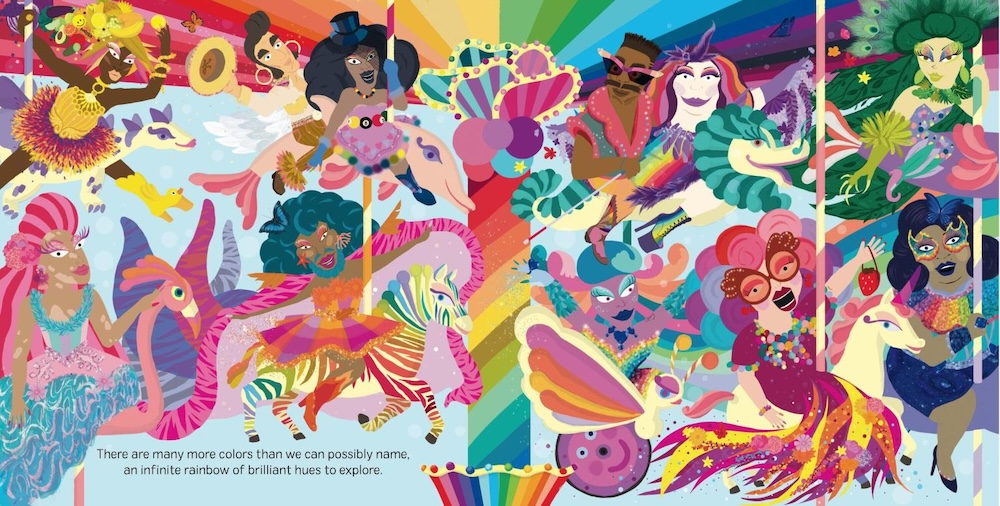
LIL MISS HOT MESS She was my first choice as an illustrator. Partly because the work that she did—a lot of her own publications, they feature cute-but-quirky monster, or cute-but-kind-of-weird monsters. I felt like there was a subtle inherent queerness to them already, and that if she could do these kinds of monsters, she could very easily do drag performers. I usually send her a selection of inspiration photos, mainly drag performers in my networks, just to capture the diversity of drag performers and begin to think about what they might look like.
48 HILLS Can you tell me—is it OK to ask—if there are any individual performers that you used as moodboard?
LIL MISS HOT MESS I will neither confirm nor deny any alleged likenesses, those are purely coincidental. But no, I think especially San Francisco readers might recognize some casual resemblances to some performers they might have seen. For real, no one is a direct one-to-one depiction—but it’s fun for me to see little flashes of some of my best Judys in the books.
48 HILLS It also feels like the books might have been impacted or inspired in some way by your work with Drag Story Hour [fka Drag Queen Story Hour], where you serve on the board. The project has become quite an incredible lightning rod for conservative panic. I would love to hear about the current scope of the story hours these days.
LIL MISS HOT MESS Drag Story Hour happens all over the world. The exact map is always changing, based on who is active at any given moment. But I think we have at this point, a couple dozen chapters in the United States and other places. It’s become more challenging in this political environment for sure, and some people are taking breaks and whatnot. But most of us do have an attitude that the show must go on. We want to continue to do story hours, whether that’s in libraries, schools, bookstores, other sorts of community spaces. We’re focused on the United States as a non-profit, but there are or have been chapters—I think there were 10 different cities in Mexico, and Sweden, Germany, Japan [among other places].
48 HILLS How has that media firestorm impacted operations and attendance?
LIL MISS HOT MESS One of the biggest things is that we have to pay more attention to safety considerations. Obviously, that’s our number one concern with any situation or story hour. But given the intensified protests and threats at story hours, we’ve had to develop new protocols. I won’t say too much about the details, but we do take a kind of community centered approach to safety based on a number of different models. Theyt are really about community members protecting each other and de-escalating potentially hostile situations as proactively as possible.
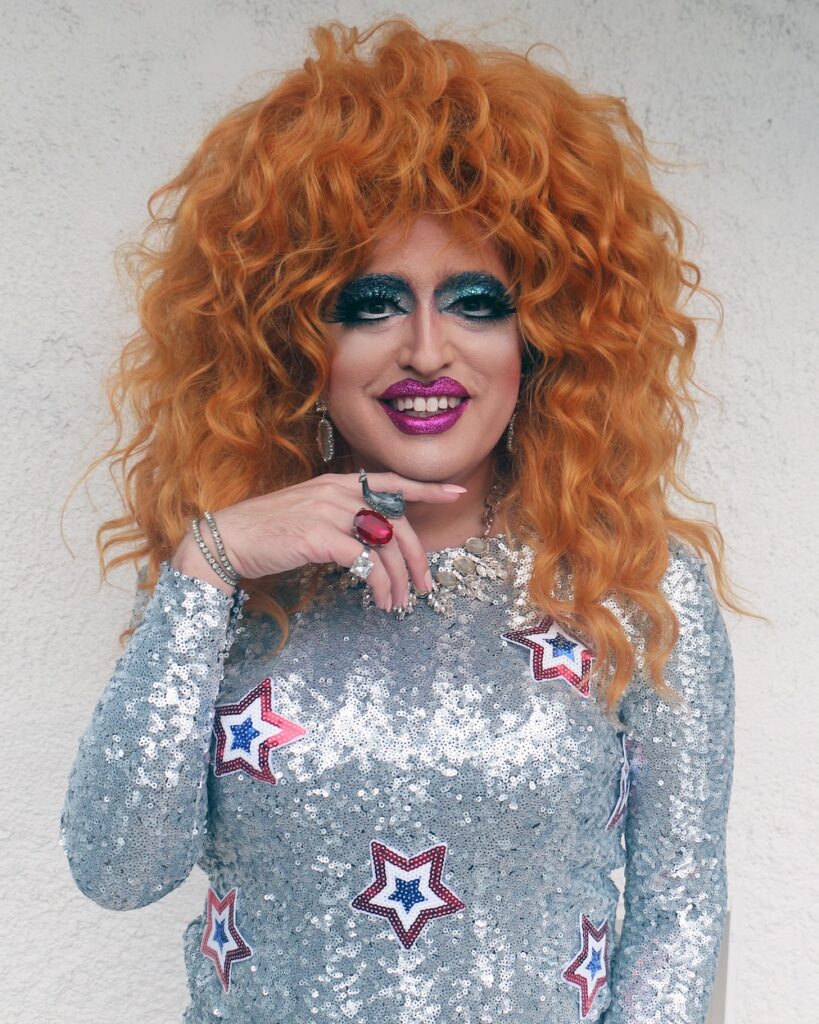
48 HILLS And then speaking of other media firestorms, what was your immediate thought or emotion when you found out you’d been not only namechecked but had your headshot displayed at a U.S. Congress hearing by the “bleach-blonde bad-built butch-body” herself?
LIL MISS HOT MESS I mean, I wish I had gotten to go to Washington myself, but having my headshot blown up to an oversized scale was a good close second. It was surreal to wake up that morning and have a flurry of messages from friends around the country who had already seen it. This is the first time that I’ve been namechecked in an official Congressional or federal hearings, but plenty of politicians have had their name in my mouths on various other occasions, including now-Secretary of State Marco Rubio, different governors, people at all levels of government. It’s disappointing that they use me and use this project in such disingenuous and also misleading ways. They’re spreading lies, they’re spreading fear. I felt like with Marjorie Taylor Greene—unfortunately, elected officials in Congress have a lot of leeway with what they can say in official hearings. In any other context, that would have been defamation in a pretty closed-case kind of way.
I have thick skin, I can handle the attacks. I think what’s most upsetting is how this translates into attacks on LGBTQ people and especially trans people in this political climate. They’re also attacks on public institutions, in this case, public media and also public schools, but I think the larger sense of public welfare and a social safety net that should benefit everyone. It is also an attack on imagination and a sense of free-thinking. I do fundamentally believe that fighting back against this culture and movement of fear and fascism is so important. That’s always part of the playbook, to make you feel afraid and make you silence yourself.
I think that as much as they accuse of indoctrinating children—which is such a ludicrous concept—I do want to teach children to think for themselves and to think outside the box and to imagine a more just world. And I’m certainly not ashamed of that.
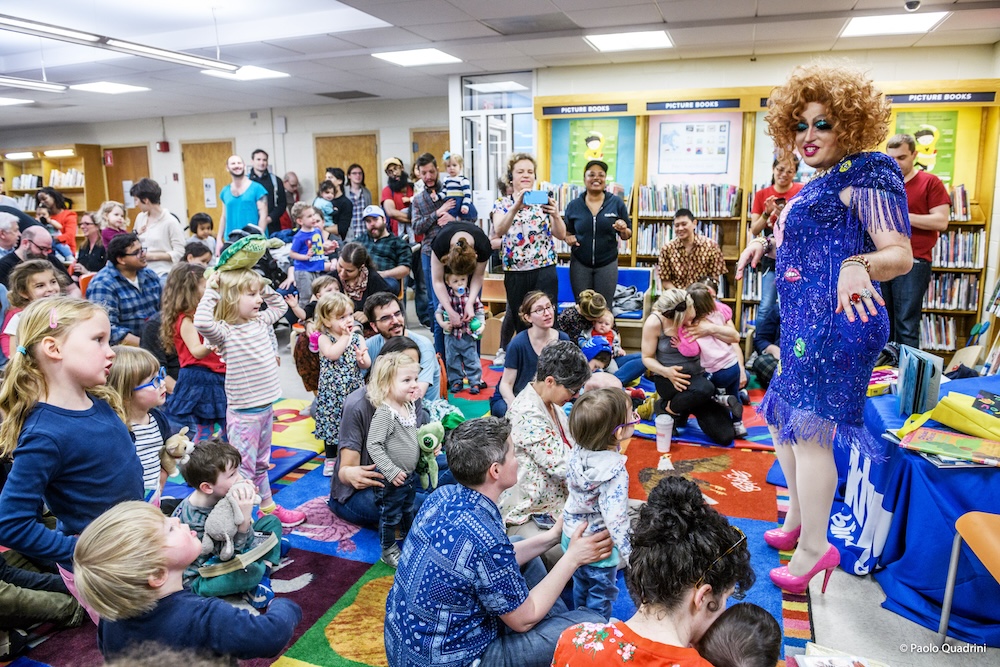
48 HILLS I think part of the reasons that queens are so beloved is that they so visibly wear their non-compliance with the hetero-patriarchy—maybe you do have to be brave to be a drag queen, but ironically all the glam does have a way of turning into armor once it’s on. Having said that, what are the signs of resistance that are giving you hope these days?
LIL MISS HOT MESS Well, for starters it’s drag—not surprisingly. I mean, I look to the history of drag, especially, and broader histories of queer and trans activism, because in many ways, we’ve fought similar battles before and we’ve won.
Actually, right now I’m sitting in a gallery. I’m curating a show on the history of drag in West Hollywood (“It’s Where I Belong: 40 Years (and More) of Drag in West Hollywood” opens Thu/22 at One Gallery, Los Angeles), which is kind of a passion project that allows me to sit with all these beautiful materials that showcase, as Justin Vivian Bond says, that glamour is resistance. It’s not only the armor, but also the spirit, that allows us to fight back against these things. I really take inspiration from historical and contemporary times when we have brought a sense of play and fun into our activism, which helps to show that another world is possible, and shifts the terms of debate. You know, drag performers were in some ways, are like clowns or the court jester. Our role is to reflect back the absurdities of the world around us, to show that the emperor is wearing no clothes. Sometimes, people have done that by throwing pies at politicians’ faces. Sometimes, it’s by Divine capturing the perfect photo sneering at Donald Trump before it was even possible to think he’d be president.
I also think about that really great video of an action by Indigenous members of Parliament in New Zealand who performed a haka ritual as a way of disrupting [consideration of a bill meant to reinterpret the treaty between the Māori people and the New Zealand government]. I thought that was kind of in that same spirit—it’s just so beautifully reaffirming of the specificity of cultural ways of doing things that don’t fit into dominant systems, highlighting the ways that these systems are imposed on all of us. I think even that momentary break or rupture helps us open up a new space of possibility.
Buy Make Your Own Rainbow: A Drag Queen’s Guide to Color here. Support Drag Story Hour here.

